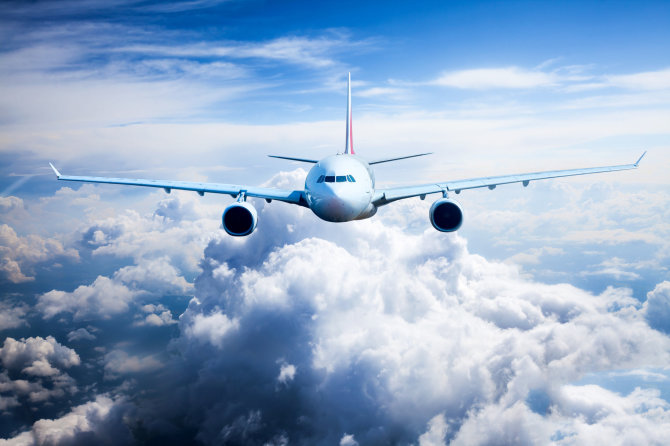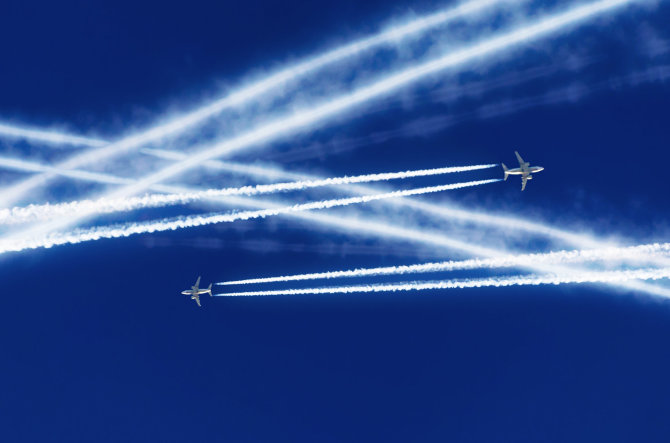Based on a famous daily newspaper
Facebook users are sharing a photo of an article on their accounts that purports to confirm that “chemtrails” are not actually a conspiracy theory.
“The Financial Times admitted that chemtrail spraying is not a conspiracy theory, as the mainstream media has claimed for years, but a real phenomenon that is helping to combat so-called “climate change,” at least two women said.
Another internet user made the same claim.
“The Financial Times claims that artificially lowering the Earth’s temperature through geoengineering will help prevent a future climate change catastrophe.”
In the past, Western media wrote about chemtrails as one of the conspiracy theories about the spraying of poisonous aerosols from airplanes so that the world government would “destroy the population,” the man explained.
Not a word about “chemtrails”.
All the photos published by netizens show the headline of the article – not from the Financial Times at all.
this “news” announced known liar page The People’s Voice.
There is no article on the Financial Times website that mentions “chemtrails”, as the word is only used in the credible media to refer to conspiracy theories. This can also be checked by typing the word “chemtrail” into the publication’s website search box.
However, The People’s Voice quotes the real Financial Times article titled “Geoengineering is worth the risk – provided we regulate it properly.” However, there is no acknowledgment that “chemtrails” are real.
The article talks about global warming and efforts to limit this process.
“Given that the risks are already high and threatening to increase, we cannot afford to ignore any existing methods.” This includes such controversial techniques as geoengineering, specifically solar radiation modification (SRM), where a small fraction of sunlight is directed back into space in order to cool the planet,” the article reads.
It is noted that SRM is an experimental approach with climate, health and ethical risks. It involves techniques such as stratospheric aerosol injection, where tiny particles are released into the upper atmosphere that scatter sunlight and mimic the cooling effects seen after large volcanic eruptions.
Another method is marine cloud brightening, where seawater is sprayed into the air to increase the reflectance of low-lying clouds.
“With these methods, it would be possible to quickly and inexpensively reduce the global temperature. They can also have serious harmful consequences and disrupt regional weather patterns, damage the ozone layer and cause acid rain,” the article says.
Although SRM is controversial, its failure to limit global warming calls for scrutiny and careful assessment of whether it can provide any benefits and how to mitigate its risks, notes the Financial Times.
What are chemtrails?
The word “chemtrails” itself is associated with conspiracy theories and is not used in the scientific literature or in articles or reports of credible media outlets. This is what netizens call the condensation trails that appear after airplanes, which are mostly water.
Most of these theories suggest that someone is maliciously spraying dangerous chemicals on the population.
These are the tracks left by airplanes is formedwhen water vapor and fine soot particles formed by burning jet fuel freeze into ice crystals. At low humidity, they persist and eventually create visible vapor trails in the sky.
Differences in humidity explain why some aircraft leave vapor trails and others do not. The supposed chemicals in the clouds are unlikely to reach the Earth’s surface because they are so high up.
Conspiracy theory about “chemtrails” became popular back in the 1980s. They were originally said to be used to reduce or stun the population.
However, later these theories became even less plausible. Some have begun to claim that “chemtrails” are being sprayed to spread the COVID-19 virus, distribute vaccines, initiate mind control, or promote a “new world order.”
Where did this theory come from?
As CNN notes, the theory is largely based on a 1996 US Air Force investigation entitled “Weather as a Force Factor: Managing Weather in 2025.”
Its description said the study was commissioned by the Air Force chief to examine the concepts, capabilities and technologies the United States will need to maintain a dominant aerospace force and national defense capability in the future.
It is noted that the views expressed by the authors in this report do not reflect the official policy or position of the US Air Force, the Department of Defense and the government. It contains fictional future situations and scenarios.
The idea that the government is spraying humanity with chemicals is not entirely true not justified. During the Cold War, the British government arranged more than 750 simulated chemical warfare attacks on the public. Hundreds of thousands of people have been exposed to zinc cadmium sulfide. This chemical was chosen for its small size and ability to glow in ultraviolet light, making it easy to detect. The substance was then thought to be non-toxic, although repeated exposure could be to cause cancer.
In the 1950s and 1960s, the United States did the same, using this chemical as a tracer to test the spread of biological weapons.
However, these few examples are far from implying that chemicals that are somehow harmful to humanity are being sprayed daily from commercial airplanes.
15min verdict: lie. Although the Financial Times did publish an article that was cited by The People’s Voice, it did not state that chemtrails actually exist. This concept is only used in conspiracy theories.
The publication was prepared in 15 minutes in partnership with Metait aims to stop the spread of misleading news on the social network. More about the program and its rules – here.
Source: www.15min.lt





